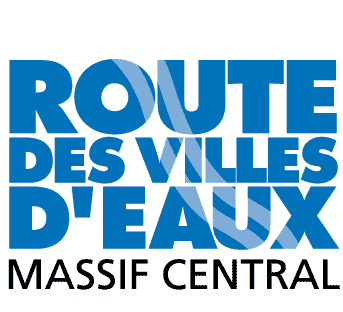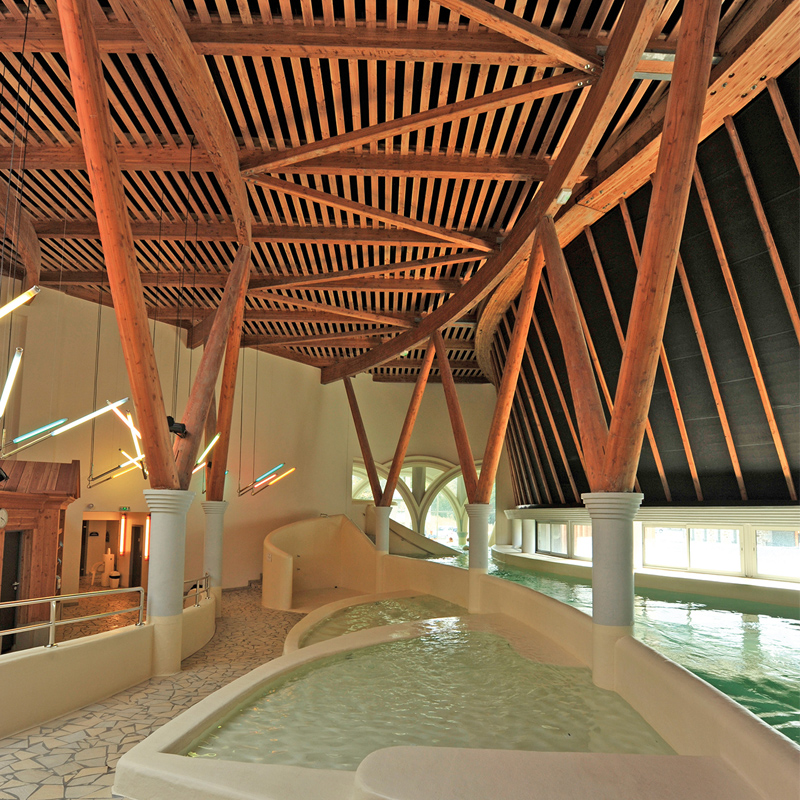The volcanic nature of the Massif Central means that thermal water is plentiful, and there are many towns and villages that have grown up around the hot mineral springs. Many of these towns are brough together in this tourist association: a development network promoting tourism activities in a route that goes trough 4 French regions: Auvergne, Limousin, Bourgogne, Rhône-Alpes.
The towns of the route all share several characteristics and are all dedicated to well-being activities, with thermal water at the heart. They all have a significant thermal heritage to share, full of historic architectural treasures, including five Gallo – Romans baths which can still be seen today. The youngest town in the Route is Montrond-les-Bains, whose waters were discovered in 1881, and no fewer than eight of the thermal spa establishments are protected by the Historic Monuments Service of France .

Route des Villes d’Eaux du Massif Central
The Massif Central boast some of the hottest waters in Europe at Chaudes-Aigues (82ºC) and a thermal water jet at Vals-les-Bains which sometimes reaches 15 m high!
There is plenty to see and do in this Route, with festivals, architecture treasures, historical interpreter guides, and of course,a variety of thermal spas to choose from for relaxation and health.

Historical Background
Galicia has a long thermal tradition that goes back even before Roman times. From the Roman period itself, many archaelogical sites have been preserved and can be visited today, in Lugo, Ourense, Caldas de Reis or Caldelas de Tui, just to name a few
Most of these splendid Roman thermal complexes felt into disuse during the Middle Ages and Galician thermalism would not begin to bloom again until the 18th century. The very first modern written references about the springs were published during this period.
The first ‘modern’ spas appeared in the 19th century, under the new Spanish regulation for medical thermal complex. By 1826, 30 hydrotheraphy centres were oficially recognised and five of them were in Galicia: Caldas de Cuntis, Caldelas de Tui, Cortegada and two in Caldas de Reis. By 1875, hotels and enterntainment facilities began to spread around the baths, attracting more and finer guests.
Galicia’s thermal industry flourished in the second half of the 19th century, attracting major investments that allowed some of these spa towns to evolve into sophisticated health and leisure centres, specially A Toxa and Mondariz . During the Belle Époque these spa towns came to prominence among social elites, and word of the quality of their waters and treatments spread beyond Galician and Spain boundaries, notably increasing their fame and reputation.
Member Towns
- Bourbon-l’Archambault
- La Bourboule
- Châteauneuf- les-Bains
- Châtel-Guyon
- Chaudes-Aigues
- Le Mont Dore
- Nèris-les-Bains
- Royat – Chamalières
- Saint-Nectaire
- Vichy
- Montrond-les-Bains
- Saint-Laurent-les-Bains
- Vals-les-Bains
- Bourbon-Lancy
- Saint-Honoré-les-Bains
- Bourbon-Lancy

